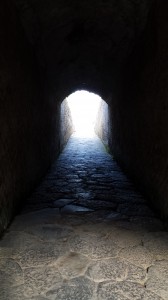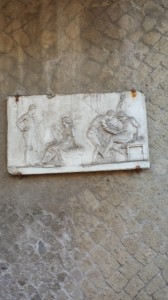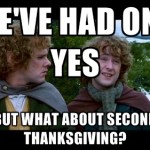In some ways, Herculaneum is a more impressive site, not in terms of size, but for its location and what is there. This site was discovered when someone was drilling a well in the early 19th century, and came across ruins. This led to the excavation of a huge section of land near the sea. Herculaneum was period in 40 plus feet of molten mud. It has taken a long time to excavate this site— over 150 years, as with Pompeii. I some ways Herculaneum is more unspoilt, less tourists, and less walking as it is in a concentrated area leading down to the sea. So let’s start at the low point… down near the sea…
There is a big public square down at the lowest level, near the tunnel that leads to the sea. The above is the street back up into the town. Here is the view from above down to this town square with its famous statue….
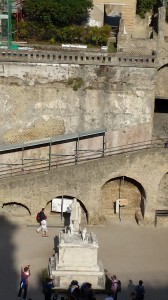
From above, you can also see what happened at the lowest level of the city… lots of persons trapped hoping for shelter near the sea from the lava…..

Alas, it was for naught…… Hundreds of skeletons piled one on top of another near the sea.
Hundreds of skeletons piled one on top of another near the sea.
Here is the statue of Balba which is in the lower town square…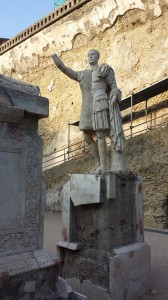 Marco Nonio Balbo was a proconsul who lived in Herculaneum. This is the statue of him.
Marco Nonio Balbo was a proconsul who lived in Herculaneum. This is the statue of him.
Here what Joe Geranio has to say about the fellow” “The loricate statue of M. Nonio Balbo, set up by his freedman Nonius Volusianus. stood on the marble base behind the altar. Marco Nonio Balbo was an eminent character of the Augustan age. A native of Nuceria, but resident at Herculaneum, he was praetor and proconsul of the province of Crete and Cyrene, tribune of the people in 32 b.C. and partisan of Octavian. Due to his munificence towards the town of Herculaneum (his epigraphs on walls, on the doors of the town as well as inside the basilica are well-known), he was appointed patron and when he died he was paid extraordinary honors, summarized in the long inscription on the gravestone situated in the middle of the terrace adjoining the Suburban Thermae.”
We spent most of our time at Herculaneum marveling at the walls, the floors, the rare windows, the artistry in the villas at this seaside resort…

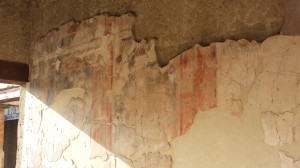

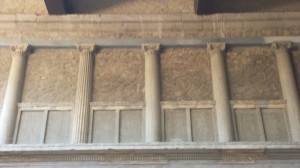

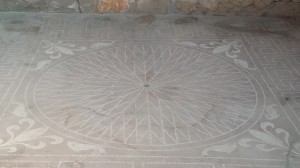
The impluviums and tablinums (as in the next two shots) were regularly colorful as they were just inside the front door of the villa, and made the first impression on a guest.

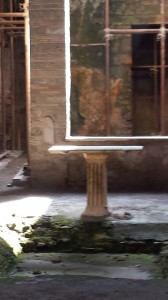
Last but not least, there are a few advertising signs in Herculaneum, though a much smaller town than Pompeii, here’s one for a ‘house of pleasure’.
The city was literally invaded by his statues, erected in the most representative places. There are in fact at least ten inscriptions referred to the statues set up in his honour.
On the contrary, the statues which have effectively reached us are fewer. They are preserved at the National Archaeological Museum of Naples, since they had been found in the period of the Bourbon excavations.
The loricate statue is the only one preserved at Herculaneum.


